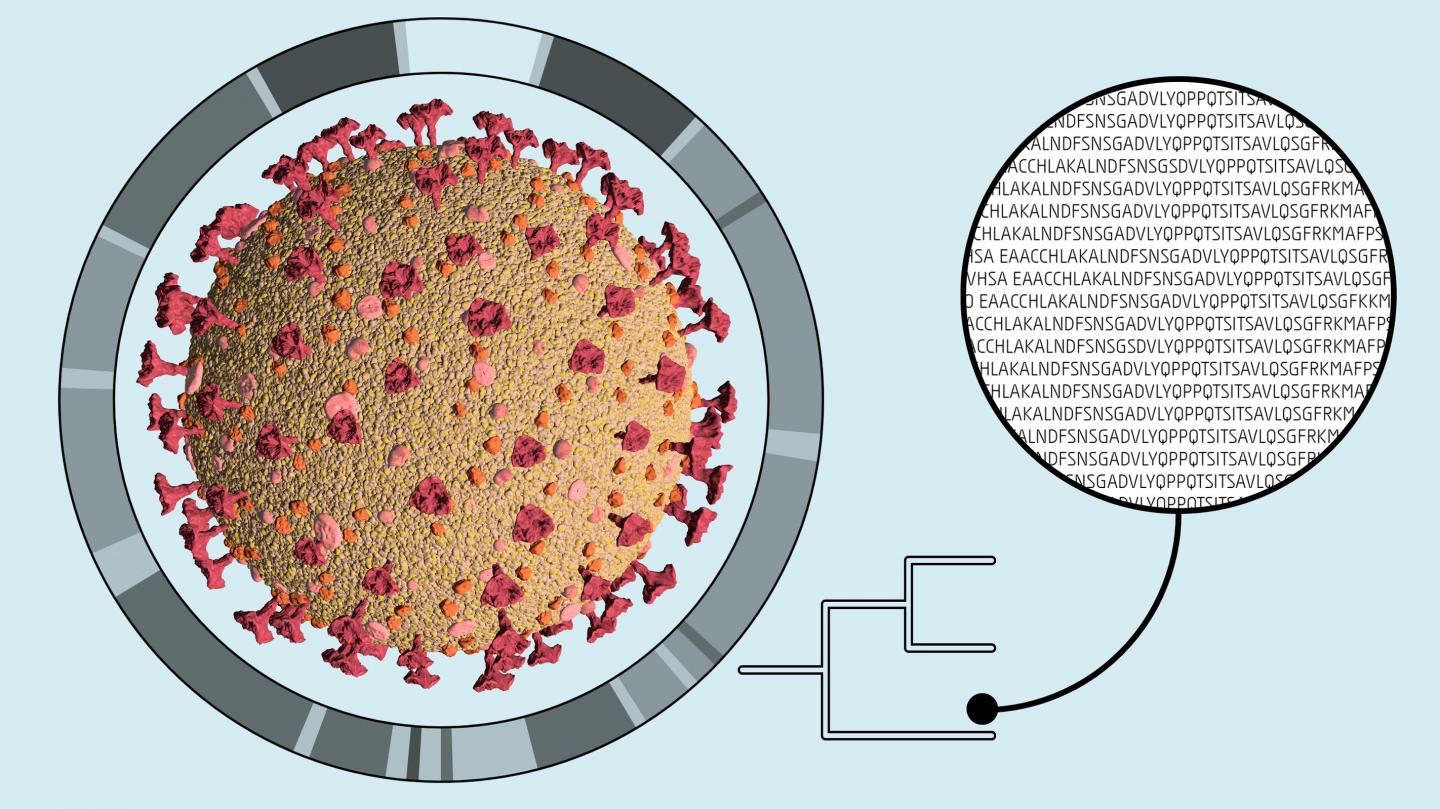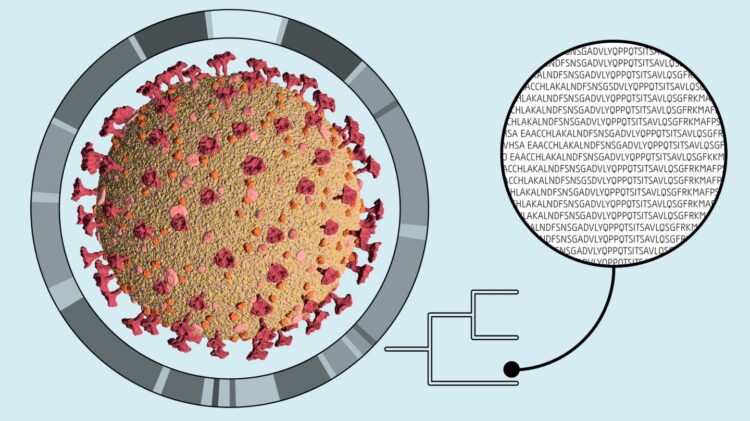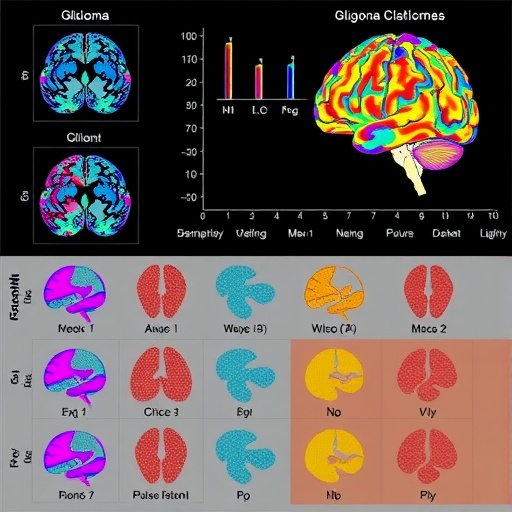
Credit: Bobby Rajesh Malhotra / CeMM
The COVID-19 outbreak caused by the coronavirus SARS-CoV-2 was declared a pandemic by the World Health Organization (WHO) on 12 March 2020. It is thought to have been transmitted from wild animals to humans in the Chinese province of Hubei already in November 2019. More than 180 countries have been affected, and the COVID-19 disease already caused tens of thousands of deaths.
In an effort to understand the evolution of the virus in the human population, the international research community has started to make the genome sequences of circulating SARS-CoV-2 viruses openly available. No virus genomes of isolates from Austria were reported so far, which presented a considerable gap in the comparative analyses of global transmission routes and of the evolution of this virus. To overcome this, CeMM Principal Investigators Andreas Bergthaler and Christoph Bock launched a collaborative project to elucidate SARS-CoV-2 genomes in Austrian patients using cutting-edge next-generation sequencing techniques and sophisticated computational analyses. “Together with the Center for Virology of the Medical University of Vienna, we developed a rapid-response strategy to generate SARS-CoV-2 whole genome sequences from patients in a time-effective manner. This addresses pertinent questions of national public health concerns and medical research such as tracking of infection chains or time-resolved viral analyses during the different stages of acute respiratory disease caused by SARS-CoV-2”, says Andreas Bergthaler, project co-coordinator and CeMM Principal Investigator.
Initial sequence analysis of the 29,900 nucleotide-long SARS-CoV-2 genomes from Austria revealed on average 6 mutations different to the reference genome isolated in Wuhan, the capital city of the province of Hubei, China in December 2019. The observed number of mutations is in line with other recently reported SARS-CoV-2 genomes. Most of the observed mutations lead to changes in viral proteins, providing evidence for positive selection pressure and evolution within the human population. Assessing the actual impact of these mutations for the virus life cycle and its interactions with both the host and the immune system will be within the scope of future investigations. Ongoing in-depth genomic analyses focus on mutational hotspots, dissect viral diversity between the Austrian strains and the strains from other countries as well as study the mutational dynamics of pandemic SARS-CoV-2.
The project builds on an adapted viral evolution sequencing pipeline, which CeMM researchers had developed and applied to a different RNA virus previously, and puts CeMM and its partners in a unique position for in-depth investigations of the mutational dynamics of SARS-CoV-2. To support the CeMM initiative, the Vienna Science and Technology Fund (WWTF) has awarded the project with 50,000 euro sequencing funds, as part of the WWTF COVID-19 Rapid Response Funding 2020.
The first milestone of the project has been achieved by today’s release of the first 21 SARS-CoV-2 genome sequences into the public databases of GISAID and nextstrain.org. Together with numerous national partners including Elisabeth Puchhammer-Stoeckl and her team from the Center for Virology of the Medical University of Vienna as primary collaborator, the Austrian Agency for Health and Food Safety (AGES) and several universities across Austria, CeMM researchers will continue these efforts to complete the sequencing of 1,000 viral genomes within the next weeks. “Whole genome sequence information of 1,000 patient-derived virus samples will provide a clearer picture of the mutation dynamics of the Austrian strains and enable the comparative analysis of these locally circulating strains in the global context. Thereby, this project will support the ongoing epidemiological and clinical investigations for better molecular insights into the spread of SARS-CoV-2 and how to fight this ravaging viral pandemic”, says Christoph Bock, Head of the Biomedical Sequencing Facility of CeMM and MedUni Vienna and Principal Investigator at CeMM.
The elucidation of the first genomes of circulating SARS-CoV-2 strains in Austria was the first milestone of this inter-disciplinary project. CeMM, the Research Center for Molecular Medicine of the Austrian Academy of Sciences, as the primary medically-oriented research center in the country, is understanding and willing to take up the challenge of assisting the medical world to fight the disease. Together with a growing network of national and international collaboration partners, it will provide valuable scientific data for health care professionals, epidemiologists and public health experts as well as offer the opportunity to molecularly dissect the mutational landscapes and dynamics of this pandemic virus. Such insights will be critical to understand how the virus evolves during human-to-human transmission and to assess its potential to subvert vaccine responses or acquire resistance against future antiviral drugs.
###
Access SARS-CoV-2 sequencing data:
The sequences and related information are accessible at https:/
The mission of CeMM Research Center for Molecular Medicine of the Austrian Academy of Sciences is to achieve maximum scientific innovation in molecular medicine to improve healthcare. At CeMM, an international and creative team of scientists and medical doctors pursues free-minded basic life science research in a large and vibrant hospital environment of outstanding medical tradition and practice. CeMM’s research is based on post-genomic technologies and focuses on societally important diseases, such as immune disorders and infections, cancer and metabolic disorders. The goal of CeMM is to pioneer the science that nurtures the precise, personalized, predictive and preventive medicine of the future. https:/
The Medical University of Vienna (MedUni Vienna) is one of the most traditional medical education and research facilities in Europe. With almost 8,000 students, it is currently the largest medical training centre in the German-speaking countries. With 5,500 employees, 26 departments and two clinical institutes, 12 medical theory centres and numerous highly specialised laboratories, it is also one of Europe’s leading research establishments in the biomedical sector.
https:/
The Austrian Academy of Sciences (OeAW), founded in 1847, is the leading organization promoting non-university academic research institutions in Austria. In the awareness of its social, cultural and economic responsibility, the Academy conducts basic research which is open for practical applications, and its members support this function by making their broad range of expertise available to the public and advising decision makers in politics and business. The Academy is currently promoting 27 research institutions with more than 1,700 employees, which are located in several federal states of Austria, with the headquarters in the Old University in the center of Vienna. https:/
Media Contact
Laura Alvarez
[email protected]
Original Source
https:/





